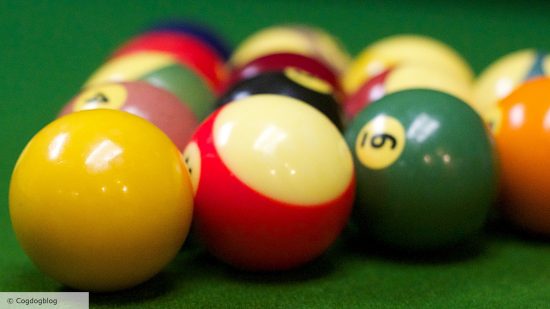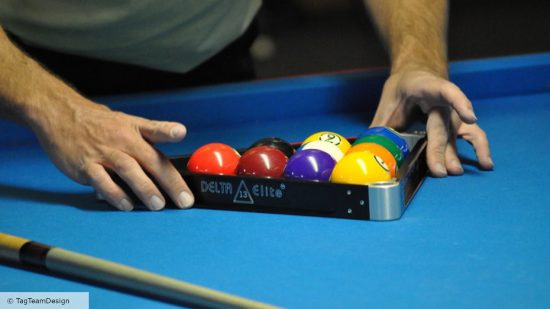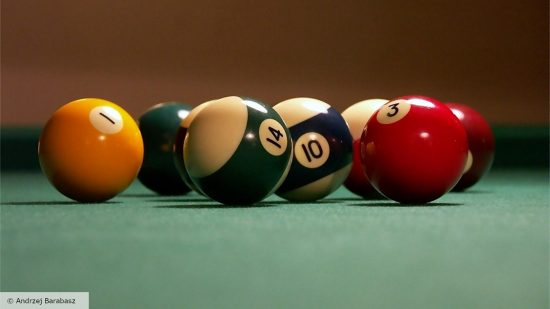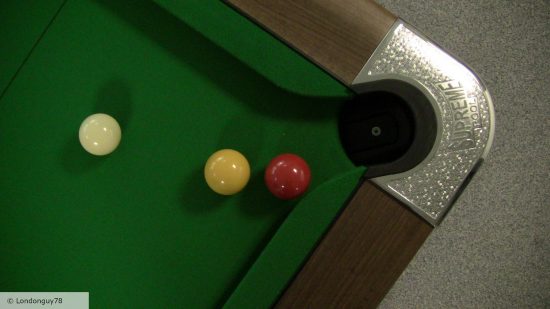There’s never a bad time to learn how to play pool, as it’s an enormously popular game among sports enthusiasts and casual players. You may think you already know how to play this classic ball-and-cue game, but it’s easy to forget some of the more crucial details. Whether you’re picking up pool for the first time or returning to a beloved favorite, we’re here to help you learn how to play 9 ball and how to play 8 ball.
Before we start chalking cue sticks, though, here are a few more game tutorials for lovers of classic board games and popular party games. We can teach you how to play shuffleboard, how to play darts, and even how to play chess. Plus, for lovers of the best board games, we’ve got plenty of Scrabble strategies and tips for how to win Monopoly every time.
But now, back to pool:
Equipment for playing pool
The main things you need to learn how to play pool are pool balls, cues, and a table to play on.
Pool tables come in a variety of sizes, typically ranging from seven to nine feet long. As long as your pool table is twice as long as it is wide, it’s suitable for play. All pool tables will also come with a cloth surface and six pockets in their corners and midpoints.
To play pool, you’ll need two cue sticks (one for each player or team). These are usually 57 to 59 inches long, and they have a chalky tip. Most pool tables come with a small piece of chalk you should use to re-chalk your cue stick before every shot.
A pool table comes with 16 pool balls. This includes:
- One white cue ball
- Seven ‘striped’ balls
- Seven ‘solid’ balls
- One black ‘eight’ ball
In some sets, every ball except the cue has an individual number. In other sets, only the eight ball is numbered – and the solids and stripes are instead represented by different colors.
Pool tables tend to provide a triangle rack that will help you set the balls up for a game (more on this shortly).
How to play 8 ball
Use your triangle rack to arrange the pool balls, and place the filled rack towards one end of the pool table. Generally, the eight ball is placed in the middle, and the balls around it alternate between solids and stripes. The cue ball is placed towards the other end of the table, about half-way between the corner and midway pockets.
Remove the triangle rack, and choose a player or team to go first. They’ll aim to hit the cue ball into the cue balls (a shot known as ‘the break’. If any ball ends up in a pocket, that person or team ‘claims’ the ball’s type (solid or stripes). After this, players are no longer aiming to pocket just any pool ball – they must aim for their own type.
If a player pockets one of their own balls, they can shoot again. However, if they commit a foul, their turn ends and their opponent gains an advantage. In some games, this means the opponent can choose where on the table to place the cue ball for their turn. In others, the opponent can take an extra shot on their turn.

There are multiple ways to foul in 8 ball pool, including:
- Pocketing the cue ball or shooting it off the table (known as a ‘scratch’)
- Pocketing an opponent’s ball
- Failing to hit one of your balls on your turn
- Hitting an opponent’s ball before your own
- Playing out of turn
To win 8 ball pool, you need to pocket all balls of your designated type, and then you need to pocket the eight ball. If you pocket the eight ball early or scratch the cue ball after pocketing the eight, you lose.
How to play 9 ball
An alternative way to play pool is 9 ball. This variant is played with numbered pool balls, and you only use numbers one to nine.
To begin the game, set these up in a diamond shape inside your triangle rack, with the ‘one’ ball at the point of the triangle (closest to the players). The ‘nine’ ball should be placed in the center of the diamond. When positioning the triangle rack and cue ball, follow the standard setup rules for 8 ball.
Choose a player or team to go first. They must break by aiming at the ‘one’ ball. In 9 ball, players aim to pocket the balls in numerical order. This means, until the ‘one’ ball has been pocketed, players can’t aim for any other ball on the table.
There’s no penalty for accidentally pocketing a different ball, but it’s considered a foul if the cue ball hits any ball of a higher number. For example, if the cue ball hits the ‘one’ ball but knocks it into the ‘three’ ball, which then lands in a pocket, this is a legal move. However, if the cue ball hits the ‘three’ ball before the ‘one’ (or misses the ‘one’ entirely, this is a foul. When a player fouls, their opponent can place the cue ball anywhere they like on their turn.
If a player (including the starting player) pockets a ball, they get to take another turn. Play only passes when the player fails to pocket a ball. The next player must continue to aim for the lowest-numbered ball still on the table.
Whoever pockets the ‘nine’ ball first wins the game. This can happen at any time (even if all other balls haven’t been pocketed yet), so 9 ball tends to be a much faster-paced game than 8 ball.
For even more entertainment, here are the key poker rules and poker hand rankings that every fan of playing card games should know.
Source: Wargamer







